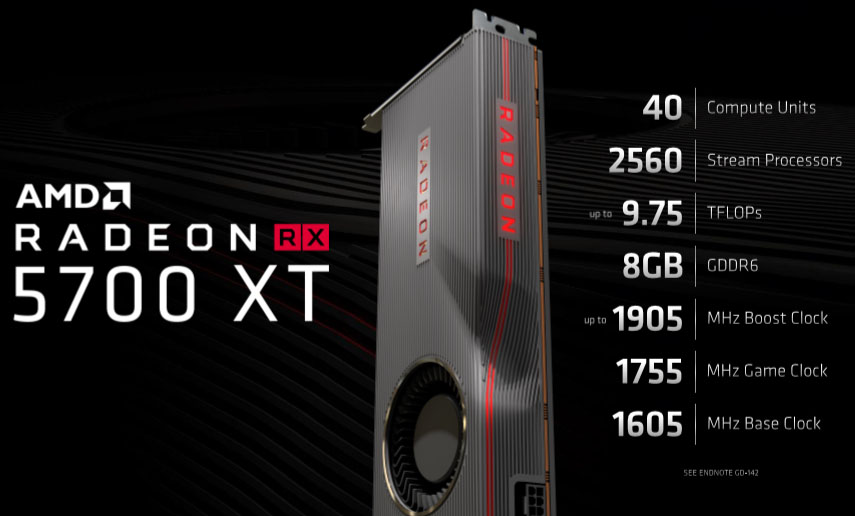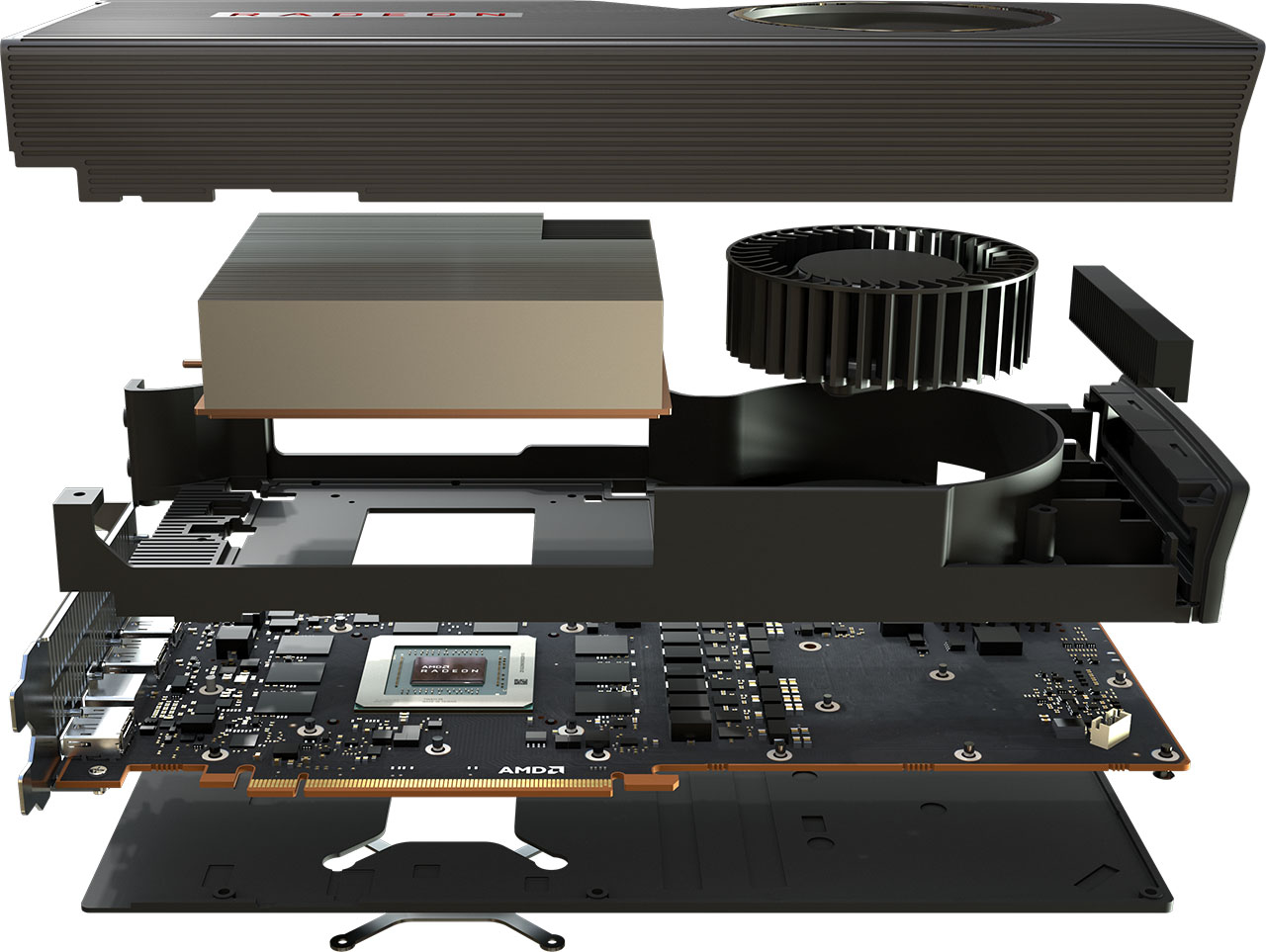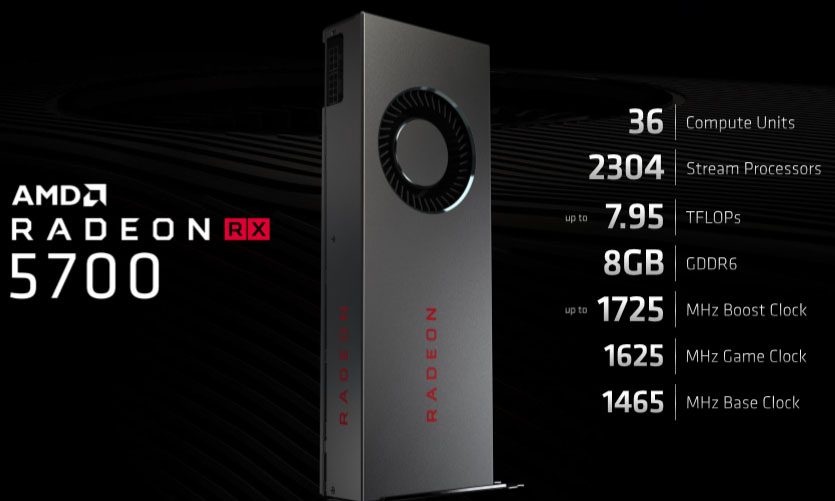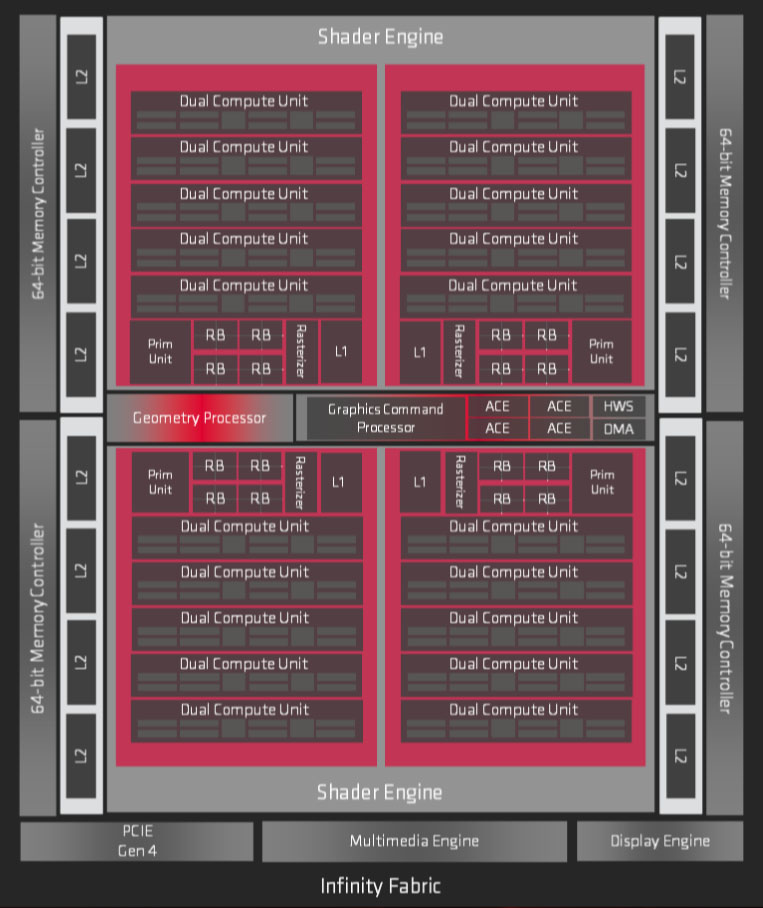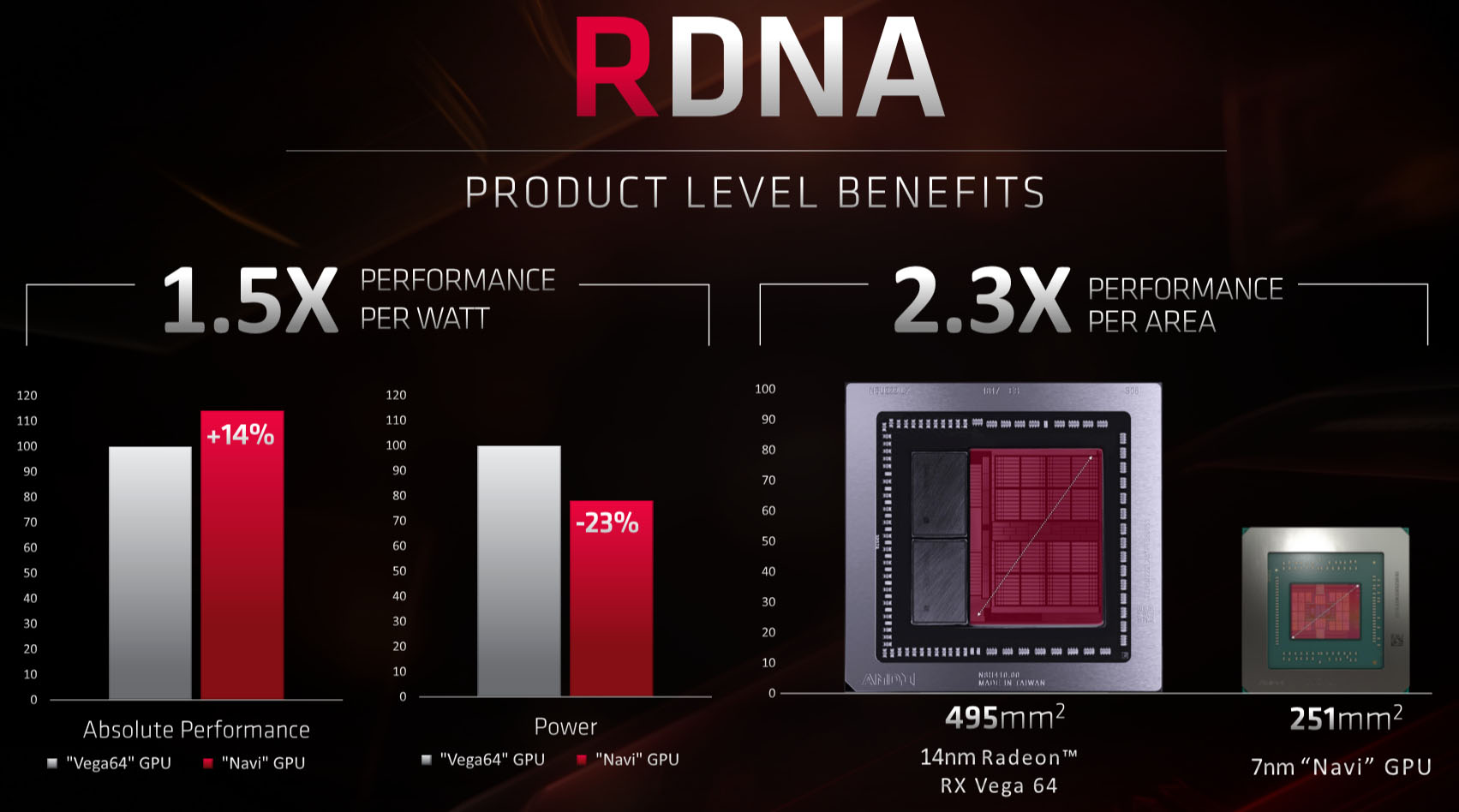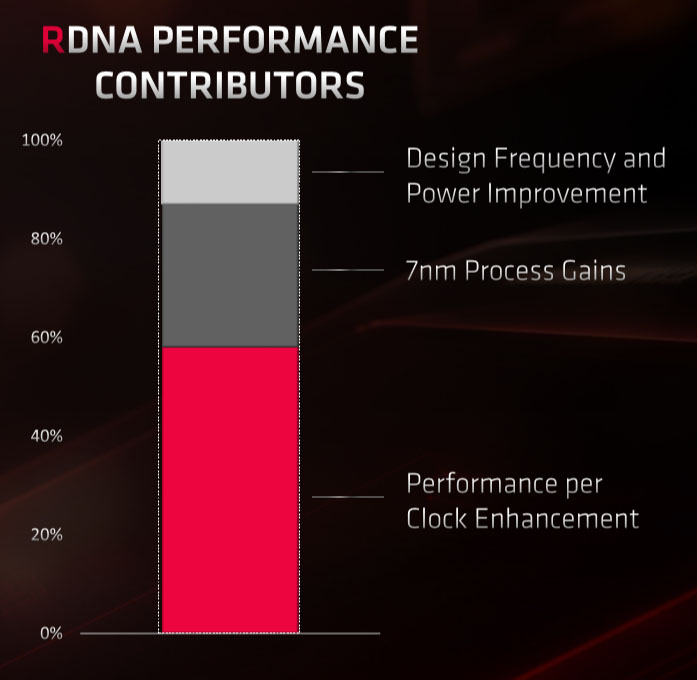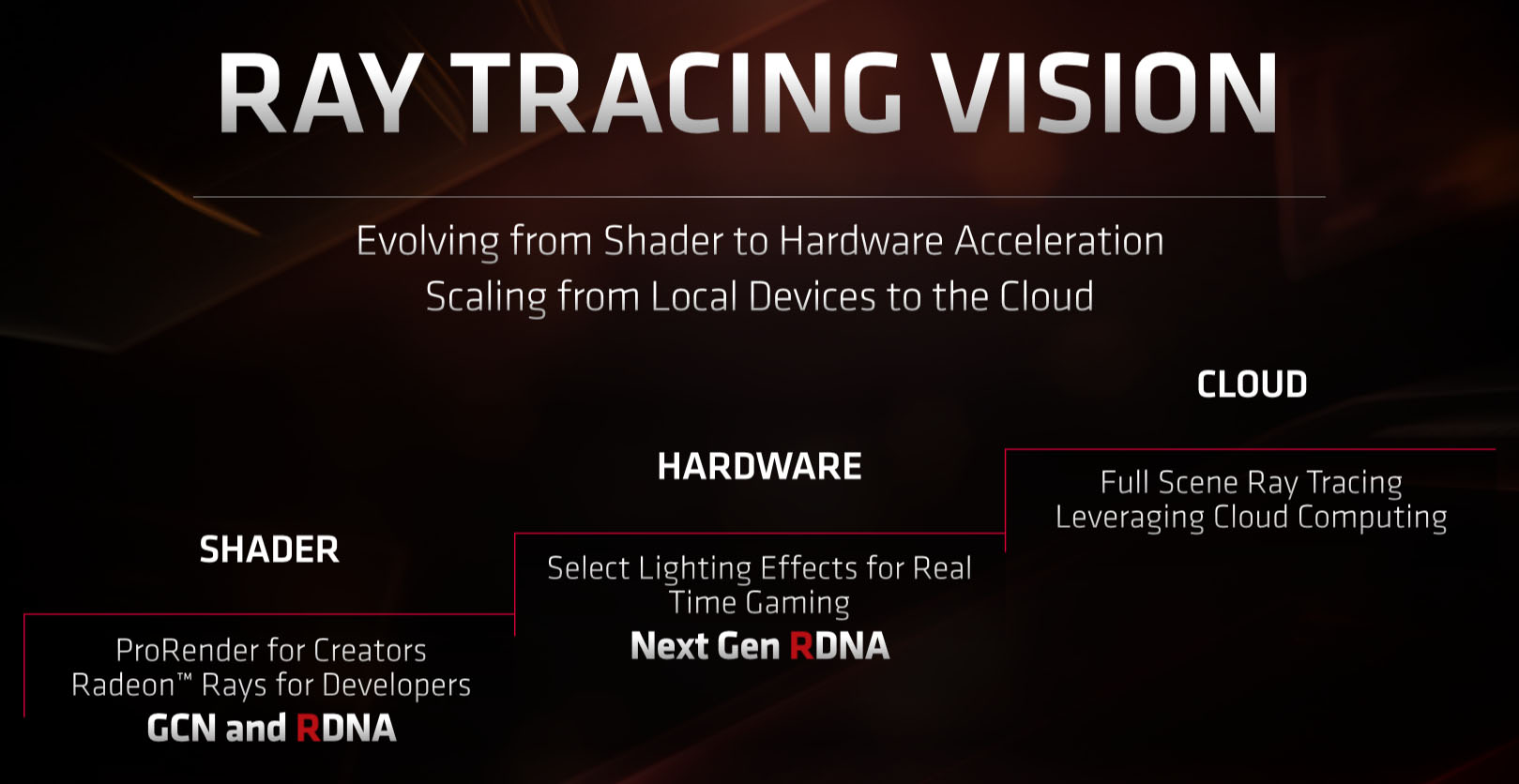AMD Announces Radeon RX 5700 XT and RX 5700: Navi Takes the Fight to GeForce RTX
AMD’s CPU team looks to be firing on all cylinders, having just announced third-gen Ryzen processors that purportedly beat Intel’s line-up in performance and pricing comparisons. Meanwhile, the Radeon Technologies Group desperately needs a win of its own after years of playing catch-up. Radeon RX 5700 XT and Radeon RX 5700, both based on the much-anticipated Navi GPU, won’t be the cards to beat Nvidia’s highest-end GeForce RTX models. However, they may be able to knock off GeForce RTX 2070 and 2060, provided the company can price them properly and ship in sufficient quantity.
Meet Radeon RX 5700 XT and Radeon RX 5700
The Radeon RX 5700 XT wields 2,560 Stream processors and 160 texture units, divided up into 40 Compute Units. At a peak Boost clock of 1,905 MHz, those CUs facilitate up to 9.75 TFLOPS of compute performance. On paper, that’d put the card somewhere between Radeon RX 590 and Radeon RX Vega 56. However, AMD is specifying clock rates a little differently this time around, so Boost frequency may just be a vanity rating. The more realistic spec is 1,755 MHz. AMD says this Game clock represents a typical rate across more than 20 games it tested, so expect to see cards running somewhere between the Game and Boost frequencies. A 1,605 MHz base clock should be sustainable, even through a worst-case workload like FurMark.
AMD pairs the Radeon RX 5700 XT to 8GB of GDDR6 memory transferring data at 14 Gbps over a 256-bit bus. The resulting 448 GBps of theoretical bandwidth exceeds the 410 GBps available to Radeon RX Vega 56 through its 8GB of HBM2, but trails Radeon RX Vega 64’s 483 GBps.
Like its past reference designs, AMD’s own Radeon RX 5700 XT will be a dual-slot implementation with a centrifugal fan that blows air through an aluminum fin stack sitting on a vapor chamber base, and exhausts waste heat out the back of the card. Many enthusiasts are critical of these arrangements because they tend to be louder. However, we appreciate their self-contained nature compared to axial fans that dissipate thermal energy back into your case. AMD also assures us that it carefully controls fan speed to keep the sound level under 43dB(A). An aluminum alloy shroud and backplate cover the card’s front and back, while high-end graphite interface material ensures maximum heat transfer from the Navi die.
The vanilla Radeon RX 5700 receives a relatively minor haircut, losing four CUs and 256 Stream processors. The remaining 2,304 ALUs and 144 texture units operate at a typical Game clock of 1,625 MHz and a 1,465 MHz base clock. AMD says the 5700 can hit a 1,725 MHz Boost clock, though, and that’s where it calculates this board’s 7.95 TFLOPS compute performance. All 64 of Navi’s ROPs are preserved in moving from Radeon RX 5700 XT to 5700, as is the chip’s 256-bit aggregate memory bus and 4MB last-level cache.
Both cards support PCI Express 4.0 transfer rates of 16 GTps. Of course, as of right now, there are no compatible platforms. PCIe 4.0 support on older AMD chipsets was officially rescinded earlier this month due to worries about signal integrity on motherboards that weren’t explicitly designed to enable the standard. But by the time Radeon RX 5700-series cards become available, X570-based boards and third-gen Ryzen CPUs should be ready to lay a foundation for PCIe 4.0-capable add-in cards.
The two new Radeons come armed with eight- and six-pin auxiliary power connectors. In the case of Radeon RX 5700 XT, a 225W board power rating warrants that configuration. But Radeon RX 5700 probably could have gotten by with a pair of six-pin connectors for its 180W board power. According to AMD, the 5700 XT utilizes a seven-phase power system, while the 5700 sheds one GPU phase, leaving six between Navi and its GDDR6 memory.
Get Tom's Hardware's best news and in-depth reviews, straight to your inbox.
As far as performance goes, AMD tells us that Radeon RX 5700 XT will beat GeForce RTX 2070, which means it also shouldn’t have any problem eclipsing Radeon RX Vega 64 through our benchmark suite. Similarly, Radeon RX 5700 is expected to beat GeForce RTX 2060.
Meet Navi: A Brief Look At AMD’s New GPU
Navi usurps its predecessor by virtue of multiple enhancements rolled into an architecture that AMD calls RDNA. Although the company says RDNA is all-new, vestiges of Graphics Core Next are clearly identifiable throughout. But rather than debate how much of a GPU must change to warrant a fresh re-branding, let’s look at some of what RDNA encompasses.
The bulk of this design’s advantage comes from architectural re-organization that translates into more performance per clock. Significant work went into making the Compute Units easier to utilize across a broader range of workloads. And optimizations for single-threaded performance should cascade into lower latency across parallelized tasks. The cache hierarchy also received attention in the form of a new L1 (512KB total) and a better delta color compression algorithm, yielding more effective bandwidth than AMD’s previous generation.
Deep-dive conversations ahead of the Navi announcement made it clear that AMD used some of its Zen design methodologies to enhance the graphics pipeline, too. Clock gating work made it possible to tune performance per watt, addressing one of Vega’s ugliest shortcomings. Meanwhile, less logic per stage helped facilitate notably higher operating frequencies. Together, AMD says those efforts contributed 10% or so of the gains compared to GCN.
Of course, Navi also benefits greatly from TSMC’s 7nm node and the advantages new process technology conveys. The chip is composed of 10.3 billion transistors spread across a 251mm² die. Vega was much larger. Manufactured on GlobalFoundries’ 14nm LPP process, it comprised 12.5 billion transistors in a 495mm² die. It’s no wonder, then, that AMD is citing better-than-Vega 64 frame rates at a notably lower board power.
Beyond its 3D-oriented features, Navi also boasts an improved video engine. Now the fixed-function hardware accelerates VP9 decode at up to 4K90 and 8K24; H.264 decode at 1080p600 and 4K150; encode at 1080p360 and 4K90; H.265 decode at 1080p360, 4K90, and 8K24; and encode at 1080p360 and 4K60. Encoder speed-ups are reportedly as high as 40%.
The Radeon Display Engine also picks up Display Stream Compression 1.2a support, which is significant for its ability to enable 4K monitors at refresh rates beyond 120 Hz without the need for chroma subsampling. Previously, running at 3840x2160 and 144 Hz required an image quality sacrifice to duck in under DisplayPort’s bandwidth ceiling. Alternatively, you could drop to 120 Hz at 8bpc color depth. And if you were using an HDR-capable monitor, you’d have to step back even further to 98 Hz for 10bpc. Now, with the benefit of nearly lossless compression, AMD can drive 4K monitors at up to 240 Hz or 8K monitors at up to 60 Hz through a single cable and not worry about those compromises.
Just bear in mind that monitors need to support DSC as well for the feature to work. AMD eagerly showed off an upcoming 43” DisplayHDR 1000-certified display from Asus with a native 3840x2160 resolution and 144 Hz refresh rate, but couldn’t give us any more information except to say that it will support DSC for single-cable connectivity.
No Ray Tracing Today, And A Tepid Outlook Tomorrow
Navi does not incorporate hardware support for ray tracing in any form. Rather, David Wang, SVP of AMD’s Radeon Technologies Group, told us that existing GCN- and RDNA-based GPUs would support ray tracing via shaders in ProRender (for creators) and Radeon Rays (for developers). Then, down the road, a next-gen implementation of RDNA will evolve to accelerate “select lighting effects for real-time gaming.” AMD’s vision culminates in full scene ray tracing through the cloud. Could the company mean that it sees heavy lifting handled remotely as gamers stream content? We can’t imagine the PC audience would be overwhelmingly receptive to such a proposition. Regardless, AMD believes it’ll be a few years before real-time ray tracing takes off.
There’s a lot more to say about Navi’s underlying architecture. That’ll have to wait for another day, though. AMD just didn’t give us enough time to sift through many hours of briefings before lifting the veil on its design. Stay tuned as we get our questions answered and dig in deeper.
-
clutchc Sounds like AMD is reusing some old card nomenclature. The 2900XT from 2007 and the 5700 series from 2009.Reply -
Rathbone I'm a little confued by the Navi announcement.Reply
It looks good but equivalent to RTX2070 is gonna be around 45 FPS at 4K in many of the latest games. However Xbox next and ps5 state, allegedly, 60fps at 4K. That will also be for games that haven't been released yet. And ps5 will do 8K gaming?!
TBH I thought that last point was that PS5 would have 8K output in the same way that my old intel 510 had HD output which isn't the same as HD gaming.
PS5 has also stated it will have ray tracing as standard. This doesn't seem to be the case for Navi.
So is Navi hiding something up it's sleeve? Are there parts of Navi for next box and PS5 which are embargoed until 2020? Or will the rest of the performance benefits come from elsewhere?
No offence to AMD, I want them to do well in the GPU market, but these GPUs can't promise 60fps at 4K. -
AgentLozen I was also thinking about the next gen consoles after reading this Navi analysis. Rathbone is asking the right questions about the recent Project Scarlet and Next Gen PS5 hardware. They're supposed to support ray tracing and 8K output and 120FPS frame rate. PC gamers understand those perks as requiring a $2500 desktop. You want ray tracing? 8K output? 120FPS? You're going to have to pay.Reply
Its still early, but I think that what we're going to end up seeing is (imagine me doing finger quotes) "ray tracing" and "8K Output" and "120 FPS frame rates". None of those features are going to be present on next gen hardware without compromises.
Even still, I'm really happy to see that AMD is bringing competitive hardware to the market. Nvidia's pricing model is starting to get disdainful towards its customers. -
-Fran- Console makers are customizing Navi's "not-quite-GCN" brand new arch, as well as Zen's original design to squeeze the most performance in areas they deem important. Some small tweaks can have really big impacts in certain aspects of rendering scenes or even modeling.Reply
Overall, like I said in another thread, I'm a bit disappointed on the value proposition of these cards. The 5700XT should have an MSRP of $400 and the 5700 should be $300. I'm hoping to see partners (hello Sapphire!) with superb designs at the proposed MSRP (I hope!). The blower reference design is just bad for anything that uses anything more than 150W. These cards will be using ~230W given how they have an 8pin and a 6pin.
Also, they left a massive gap under the $350 mark. I smell more Polaris refreshes, which would suck.
Cheers! -
InvalidError AMD is struggling to sell its RX570/580 at massively discounted prices despite being much faster than anything Nvidia has to offer at those price points and now AMD launches its new GPUs that are barely faster than Nvidia's year old GPUs while drawing ~50W more at about the same prices. Can't imagine how AMD imagined this being any good, most people who wanted this sort of performance at this sort of price already have it. Why buy a $400+ 5700 when you can get better performance out of an under-volted ~$350 Vega56?Reply
I foresee early price cuts on the 5700/5700XT in AMD's future, doesn't make much sense at MSRP. -
Phaaze88 They appear to have made a trend out of this. Whether it's intentional...Reply
Happened with RX 480/580. People expected those to shake Nvidia up. They didn't, but they did become great options for the budget-mid range graphics market. Not enough. People expected more.
Ryzen 1xxx & 2xxx, same thing, but competing with Intel. Didn't blow 'em away either, but great price for the performance you get. Again, not enough. Some people were still disappointed. More, moar...
Looks like those folks will finally get what they want with Ryzen 3xxx... Oh, what's this? They're priced higher than expected? But they may finally take the performance crown this time. "But the price..." Moar for less.
There's just no pleasing everyone. But it's not ideal for AMD to make this trendy, either. -
ATI9800Pro Replymamasan2000 said:Don't forget X800XT and X700XT before that
There were the Radeon 9800XT and 9600XT before that too. -
TCA_ChinChin People simply expect the non-dominant competitor that's significantly smaller to somehow come up with products that are better and sell for less. AMD messed up with these Navi cards, but I can't say that I was surprised.Reply -
TCA_ChinChin Then when they get a chip that's comparable to the competition, they are written off.Reply
